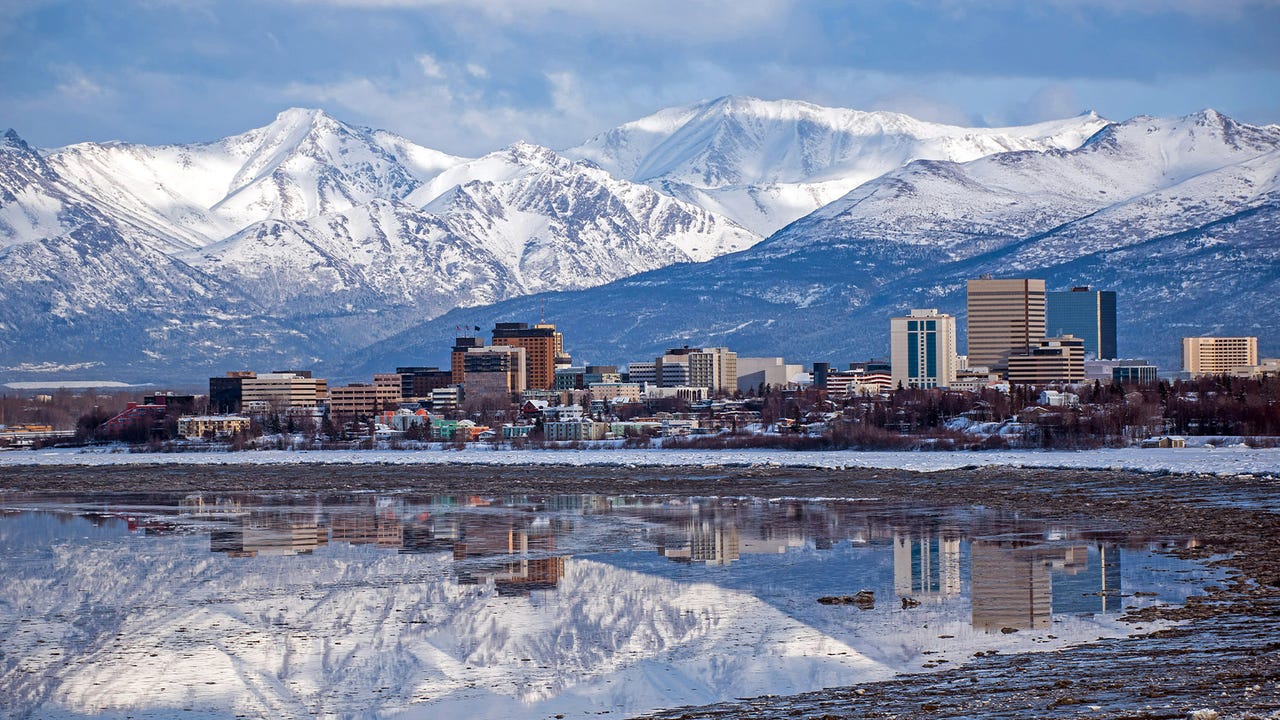At Data Center World Power in Texas last week, Alaska’s governor laid out a pitch that framed his state not as a distant frontier but as a practical, economically attractive option for next-generation data center development.
With naturally cool temperatures, vast land and freshwater resources, and several energy and connectivity projects underway, Governor Mike Dunleavy argues Alaska has measurable advantages that deserve serious consideration from hyperscalers and AI infrastructure investors.
Dunleavy positioned the state’s appeal in familiar industrial terms – resource scale, engineering pedigree, and export experience – to remind a room of data center operators and developers why Alaska can be more than a novelty.
“Alaska is in a unique position,” Dunleavy said. “We’ve always been known as a massive resource giant. The largest oil field in North America is in Alaska. In 1969, we were the first to export LNG out of Nikiski, where a new gas line is going to terminate. And of course, Alaska has the Trans-Alaska Oil Pipeline, which was an engineering marvel and has delivered about 18 billion barrels of oil.”
Alaska’s Arctic Advantage
The most immediately tangible selling point Dunleavy emphasized was climate-driven cooling efficiency. The governor stressed that ambient temperatures and abundant freshwater reduce both operating complexity and capital expense for large data center campuses.
“Think on average, we are 30 degrees cooler than Texas, which, when you look at your PUE math, could save a one-gigawatt plant upwards of $150 million a year, where you don’t need as much ancillary cooling as you do [in the contiguous US],” he said.
Governor Dunleavy also highlighted Alaska's large acreages of continuous, inexpensive land and abundant fresh water. This combination is the core of what he described as the state’s “arctic advantage” for operators wrestling with rising power demand, denser racks, and expensive mechanical infrastructure required to keep data centers online.

Alaska’s arctic climate, abundant freshwater, and vast land resources position the state as an emerging data center destination. Image: Alamy.
Power and Pricing
Energy and fuel availability formed the second major pillar of the governor’s case. Governor Dunleavy pointed to a major gas development he said would bring long-term, competitively priced power to the state and to potential data center customers.
“We hope to be delivering gas to south central Alaska in two years and exporting to Asia by 2030. That means for folks who want to set up data farms in Alaska, you might be looking at four or five cents a kilowatt hour for decades and decades to come.”
Alongside fossil fuels, Dunleavy also highlighted Alaska’s renewable potential – hydro, wind, geothermal, and tidal – and the state’s large land base for carbon-offset projects. He noted the Cook Inlet region’s tidal resources and volcanic terrain that could support geothermal exploration, and he pointed to large tracts of forested land that could play a role in corporate carbon strategies.
These remarks framed Alaska not only as a source of cheap, reliable baseload but as a place where developers could mix low-carbon sources and offset strategies into long-term sustainability plans.
Reducing Latency
Connectivity – often the reflexive counterargument to building in remote geographies – was treated as a solvable logistics problem rather than a dealbreaker. Governor Dunleavy said Alaska already has multiple fiber routes and a low-latency path to the contiguous US, and that international fiber projects are actively discussed.
“Currently, we have overland routes through Canada down to the lower 48 for fiber, and we have undersea cables to fiber. Right now, it’s about 12 milliseconds from Alaska to the coast of Oregon.”
He added that a more ambitious Arctic routing could bind Europe, Alaska, and Asia with new submarine and terrestrial landings. “What’s in the works are some serious discussions about bringing fiber over from Europe, a consortium coming over the Arctic, doing some landings in Alaska, and going to Asia,” the governor said.
Economic Incentives for Data Centers in Alaska
On cost and regulatory incentives, Dunleavy emphasized Alaska’s tax posture and the state’s control of large landholdings as competitive benefits.
“Take a look at our tax regime in Alaska, with no state income tax [and] no state sales tax,” he said. “We have very cheap land. The sovereign state of Alaska owns 110 million acres of land.”
Dunleavy invited industry partners to explore bespoke incentives that, he said, could make Alaska the “most competitive place in the US for the next generation of data farms.”
Taken together, the pitch reframes Alaska as an infrastructure play rather than a tourism hub. For developers weighing trade-offs, Alaska’s argument is that the math is changing in the state’s favor.
Whether data center operators will respond by committing large-scale campuses remains to be seen, but Dunleavy’s message was clear: Alaska is actively laying the groundwork and is inviting the industry to test a model that could be uniquely attractive in the AI era.
SOURCE DatacenterKnowledge




